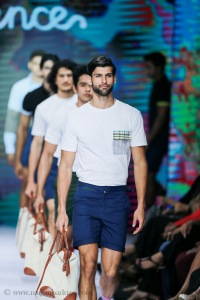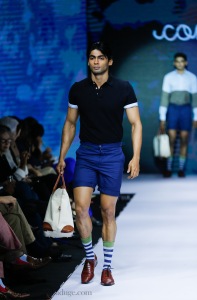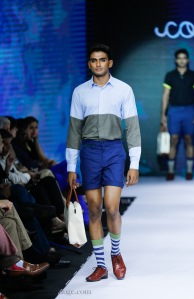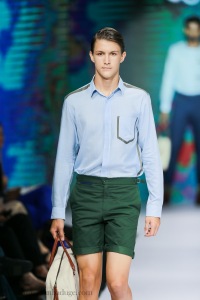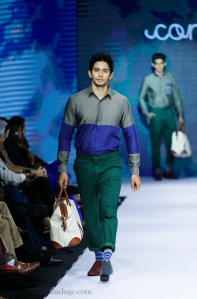A timeless, versatile staple in every wardrobe, the shirt has evolved over many centuries to become one of the most worn, most manufactured items of clothing today. Throughout history, the shirt has taken on many forms to serve as a symbol of gender, class and political expression. Since the Mid-20th Century, however, shirts have become one of the most popular garments for both men and women across all race, class and socio-economic divisions because of their simple elegance, functionality and universal appeal.
The first shirts to appear in human history date far back as the time of Ancient Egyptians. Celebrated Egyptologist and archaeologist, Flinders Petrie, discovered what is considered today as the oldest preserved garment, a linen shirt from a First Dynasty Egyptian tomb, circa 3000 BC. Of this shirt, Petrie says, “the shoulders and sleeves have been finely pleated to give form-fitting trimness while allowing the wearer room to move. The small fringe formed during weaving along one edge of the cloth has been placed by the designer to decorate the neck opening and side seam.”
Before the Middle Ages, the shirt was worn primarily by men as an undergarment or nightgown. This early form of the shirt had neither a collar nor cuffs, but a hem that could be tightened or buttoned. In the Middle Ages, one could choose between a fixed or detachable collar for their shirts, but they still remained plain, undyed garments made from linen or silk, meant to be invisible. In fact, in Medieval artworks, only shepherds, prisoners and penitents are seen with their shirts uncovered. The shirt was considered a hygienic barrier between the body of the wearer and the fabric of the outergarment, in times when daily bathing was still not a common practice.
By the 14th Century, Italy had become the centre for the manufacturing of high quality shirts. During this time, considered the golden age of tailoring, many Italian cities such as Venice, with their extraordinary mills, produced shirts for men of the upper class. By the 1500s, shirts had evolved to include the collar, with variations such as the small flat collars called “French”, the Italian version that took the form, and name of “frill”, and the “Giorgiera”, which required an expanse of fabric up to 11 metres. Other variations of collars were decorated with lace, embroidery or jalbots.
In the 18th Century, shirts were made with long tail ends to serve as drawers. It wasn’t until the late 19th Century that showing off shirts was considered “decent”. With the birth of the famous Garibaldini red shirt, previously worn by the freedom fighters of under Giuseppe Garibaldi, in 1843, shirts of various colours and styles were embraced by European and American societies. Shirts were tailored in specialized forms for different purposes, such as with wide sleeves for painting, at times without a right sleeve for sword duels, with less material for labourers, and with pockets to carry small tools.
As the popularity of the shirt grew, it became one of the first items of clothing that were worn by both the noble and working classes. Till very recently, labour is classified into two groups; white collar and blue collar. In its early days, labourers wore shirts indigo-dyed shirts that were not colourfast and, when they sweated, their necks would get stained blue.
The shirt was transformed in the Early 20th Century to what we now call the “modern shirt”, with buttons all along the front and a fixed collar. Previously, collars were a separate piece men could choose to wear with their shirts, made of celluloid. Many believe the founder of the American shirts industry, Arrow, was inspired by a polo match in England, where players wore shirts with attached collars to prevent them from flapping in the wind. Others believe an anonymous inventor created the collared shirt because he was annoyed by the flapping of his collar as he stood on the pier of the New York Harbour. During this time, Hollywood also popularized the shirt, introducing to the mainstream various styles of the shirt, such as pure white shirts with flowing satiny sleeves as worn by Rudolph Valentino, the “Oxford” of Humphrey Bogart, the “Western”, suited for the hard life of the far west worn on screen by John Wayne, and colourful “Hawaiian” worn by Tom Sellek in the cult series “Magnum P.I.”, in the 1980’s.
Today the modern shirt is loved and celebrated for its versatility, able to be dressed up or down for any occasion. Shirts today come in endless varieties of cuts, sizes and prints to adapt to fashion’s ever-changing trends and fads. Once made of traditional natural fibres such as cotton, wool, hemp and silk or synthetic fibres such as polyester, viscose and tencel, shirts today are even made from innovative fabric derived from bamboo and soya to promote sustainability and eco-friendliness in the global fashion industry.
Shirts may be ubiquitous in history, but it is a piece of clothing that continues to be innovated to meet the demands of modern consumers, and easily transformed to suit the shifts in trends, attitudes, cultures and climatic patterns. A classic wardrobe essential – it may never really go out of style.
